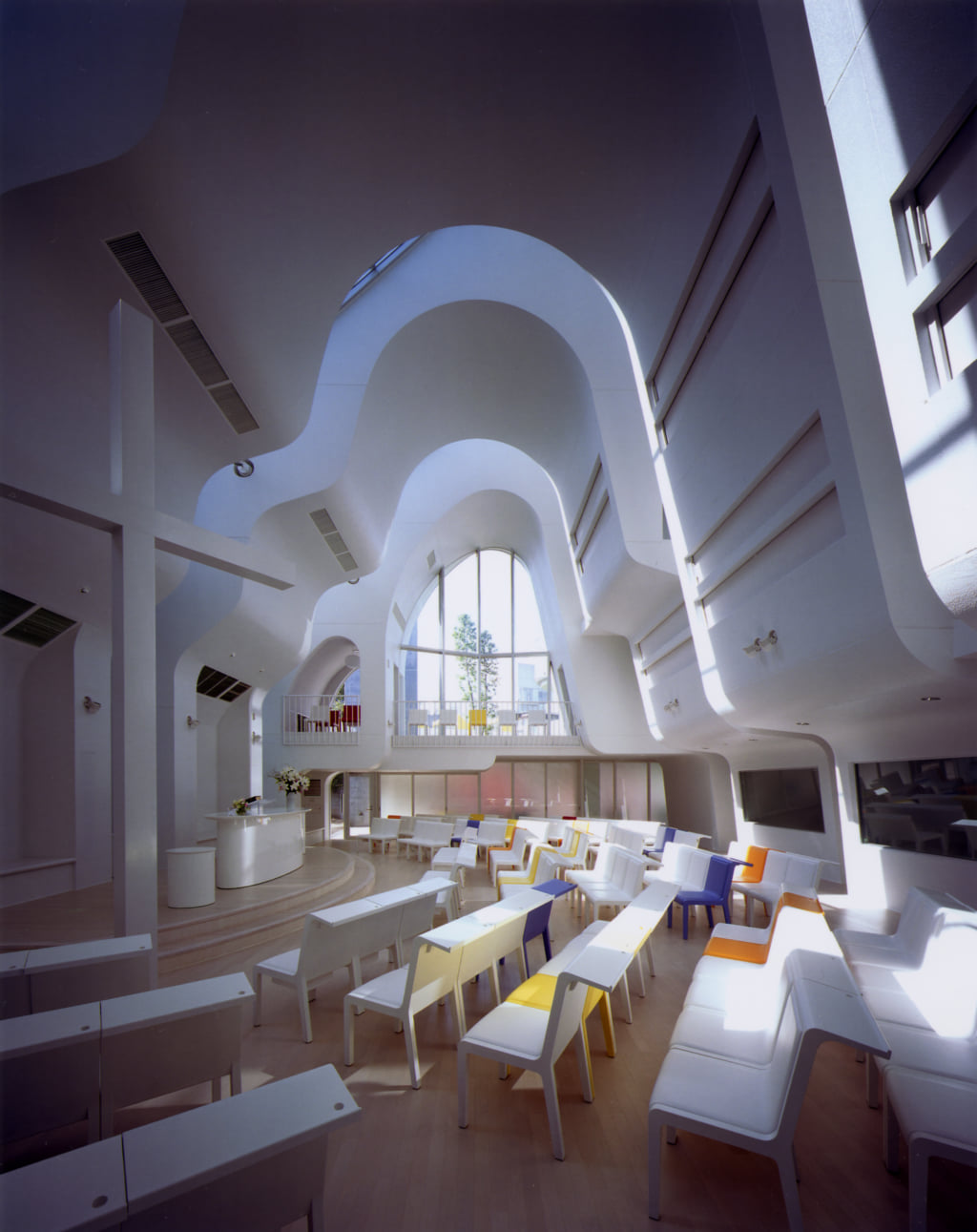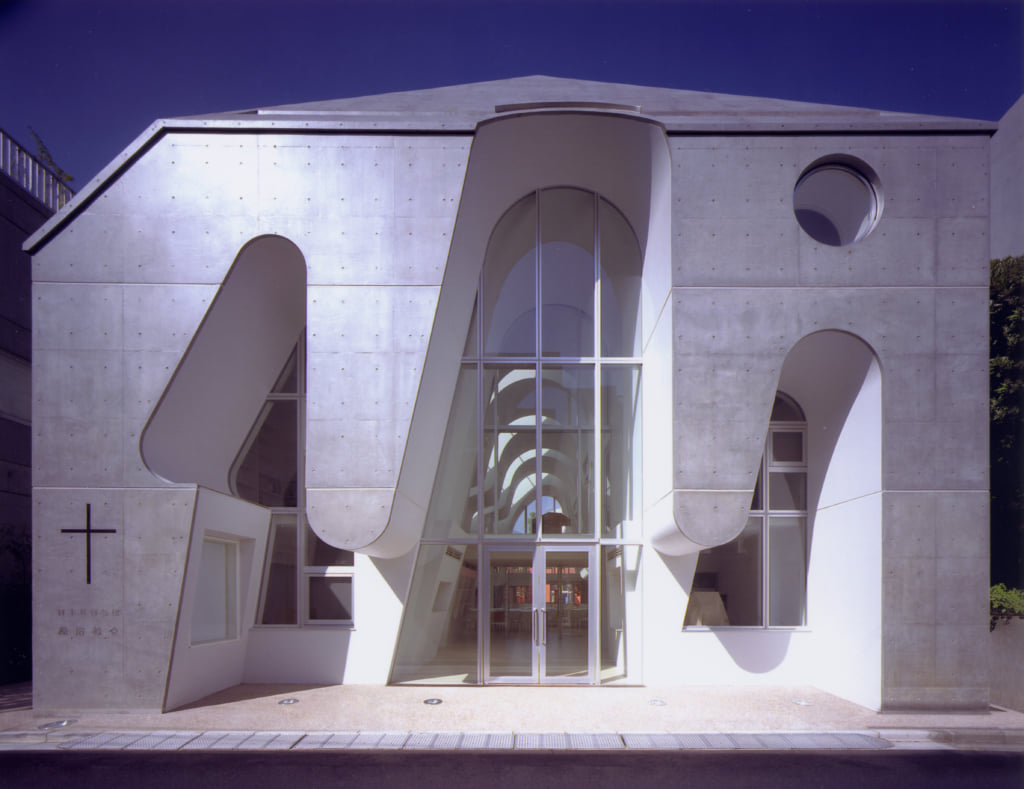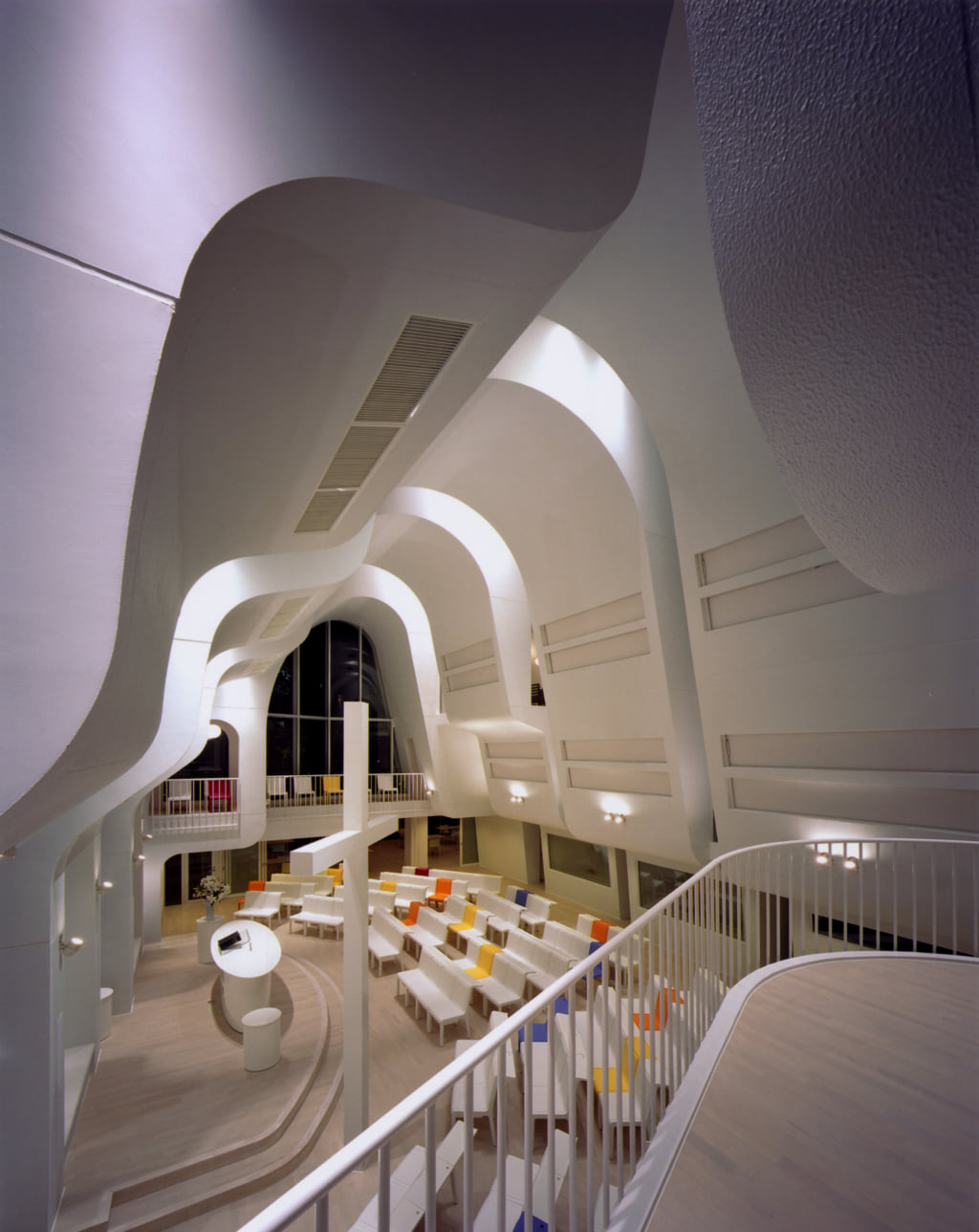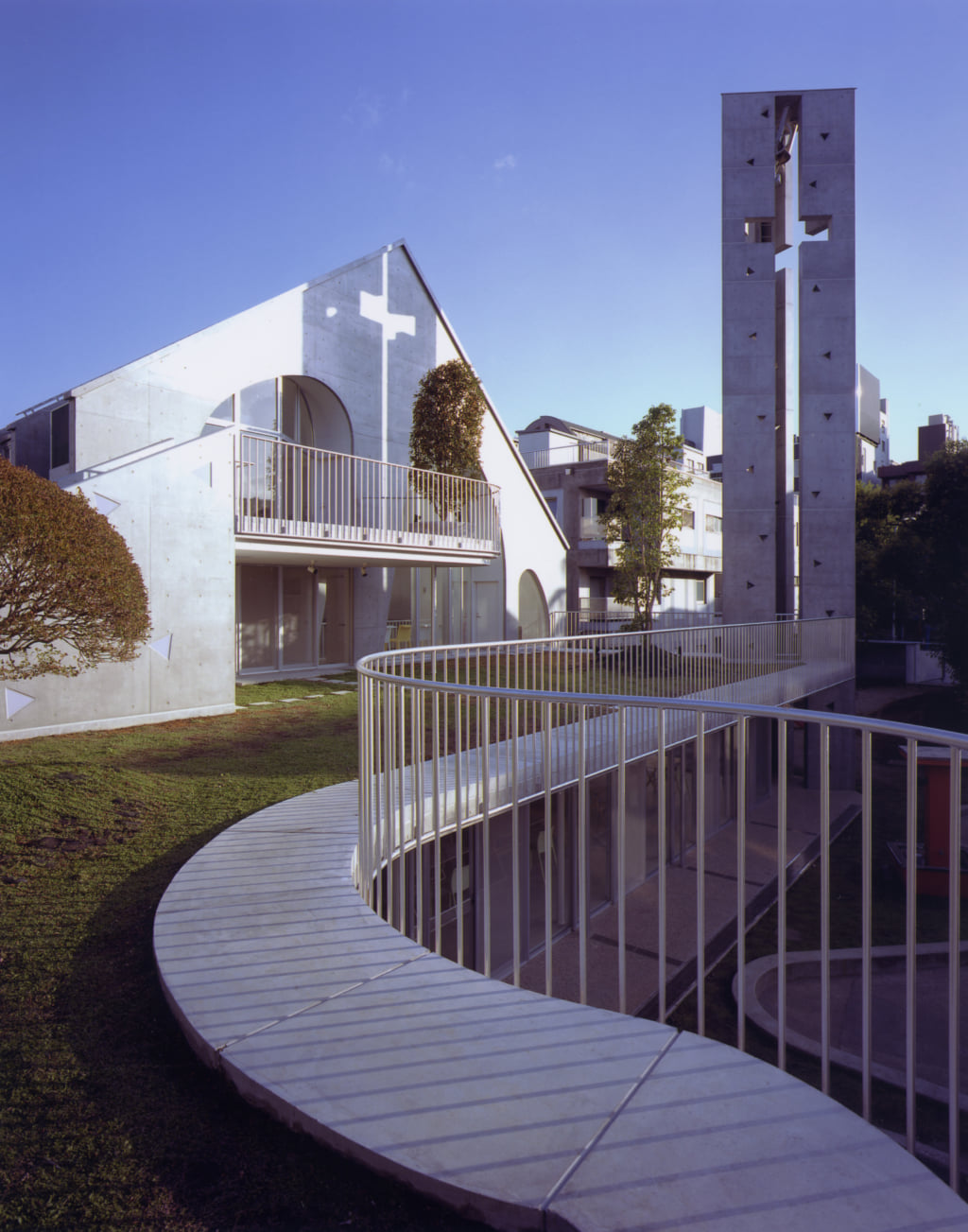A Two-in-One Protestant Temple by Ciel Rouge
In Tokyo's Harajuku district lies a brutalist temple with a curved design, built to serve as a place of worship and a concert hall.

© Ciel rouge
Constructed in 2007 in the heart of Tokyo’s lively Harajuku district by architectural firm Ciel Rouge, this protestant temple contains various surprises. Its façade, made entirely from rough concrete—reminiscent of Tadao Ando’s creations—and its angular lines contrast with the completely curved design found upon entering.
Inside are undulating walls, six arches, and a bell tower in a nod to the symbolism of the number seven, a choice made by the architects. ‘It recalls the seven churches of Asia, the seven days of creation, the seven stars, the seven musical notes…’, the architectural firm explains. This succession of arches also lets in light from outside through the interstices. ‘We drew inspiration from the passage in the Gospels where the sky opens up and the Holy Spirit descends’, Ciel Rouge continues. This lighting effect is somewhat reminiscent of SHONAN CHRIST CHURCH by Takeshi Hosaka, built in Fujisawa.
Music takes centre stage
This building does not have a solely religious vocation, however. Particular care has been taken with the acoustics so that it can be transformed into a concert hall. Balconies have also been constructed on the side walls of the space to seat the audience.
To view the programme of events, visit the temple’s website.

© Ciel rouge

© Ciel rouge

© Ciel rouge

© Ciel rouge

© Ciel rouge
TRENDING
-
A House from the Taisho Era Reveals Its Secrets
While visiting an abandoned building, Hamish Campbell discovered photographs the owner had taken of the place in the 1920s.

-
The Taboo-Breaking Erotica of Toshio Saeki
The master of the 1970s Japanese avant-garde reimagined his most iconic artworks for a limited box set with silkscreen artist Fumie Taniyama.

-
With Meisa Fujishiro, Tokyo's Nudes Stand Tall
In the series 'Sketches of Tokyo', the photographer revisits the genre by bringing it face to face with the capital's architecture.

-
Masahisa Fukase's Family Portraits
In his series ‘Family’, the photographer compiles surprising photos in which he questions death, the inescapable.

-
Hajime Sorayama's Futuristic Eroticism
The illustrator is the pioneer for a form of hyperrealism that combines sensuality and technology and depicts sexualised robots.





